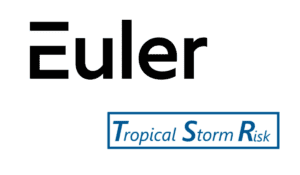How much is insurance in Toronto?
How much is insurance in Toronto?
The average cost of car insurance in Toronto is roughly $2,000 per year, or about $170 per month.
Does your insurance go down at 25 in Ontario?
There isn’t any magic number for the age a driver’s premiums go down. While age 25 often gets the credit for this, in fact a driver sees rate decreases at their first policy renewal. Every year a driver maintains a clean driving record, the same policy costs less, well into a driver’s 30s. Sep 3, 2020
Do I pay deductible if not at fault Ontario?
You can expect to pay your full deductible unless the accident was not your fault or was only partially your fault. Take the following example: You are involved in an accident. Jul 9, 2019
Is Ontario no-fault?
Ontario’s no-fault insurance system Ontario has a no-fault insurance system. This does not mean that you are never at fault for a car accident, but that your own insurance company pays your claims whether you’re at fault.
What are the pros and cons of no-fault insurance?
The pros of no-fault insurance are that it ensures quick claim payouts after an accident and reduces the number of lawsuits for minor injuries. The cons of no-fault insurance are that it raises car insurance premiums and makes it difficult for drivers to receive compensation for pain and suffering. Apr 11, 2021
What provinces in Canada have no fault insurance?
Currently there are six provinces operating under a no-fault insurance system: Ontario. Nova Scotia. New Brunswick. Quebec. Prince Edward Island. British Columbia. Jul 30, 2021
What is DCPD insurance Alberta?
DCPD coverage is mandatory. It covers your vehicle damage, damage to contents and loss of use in the event you are not at fault for an accident, or a portion of the repairs based on the percentage you were not at fault for an accident. Collision and loss of use coverages are optional.
What changes are coming to Alberta auto insurance?
Changes coming to Alberta auto insurance Starting Jan. 1, the province will be adopting a direct compensation for property damage model, more commonly known as DCPD. For drivers not at fault in a collision, DCPD will push the onus of vehicle assessment and repair to their own insurance provider. Dec 29, 2021
What are 2 things not covered in homeowners insurance?
Standard homeowners insurance policies typically do not include coverage for valuable jewelry, artwork, other collectibles, identity theft protection, or damage caused by an earthquake or a flood. Jul 12, 2021
Which of these are not usually covered by homeowners insurance?
Termites and insect damage, bird or rodent damage, rust, rot, mold, and general wear and tear are not covered. Damage caused by smog or smoke from industrial or agricultural operations is also not covered. If something is poorly made or has a hidden defect, this is generally excluded and won’t be covered.
Does my homeowners insurance cover damage to neighbor’s property?
But although a policy protects your home—the actual structure and your personal belongings—home insurance also covers your neighbor’s property under certain circumstances. If you’re liable for damages, the personal liability component of your policy pays the other party. Dec 27, 2021
What is the 80% rule in insurance?
The 80% rule means that an insurer will only fully cover the cost of damage to a house if the owner has purchased insurance coverage equal to at least 80% of the house’s total replacement value.
Does home insurance cover mold?
Key Takeaways. Mold coverage isn’t guaranteed by your homeowners insurance policy. Typically, mold damage is only covered if it’s related to a covered peril. Mold damage caused by flooding would need to be covered by a separate flood insurance policy.
What are the 3 basic levels of coverage that exist for homeowners insurance?
Homeowners insurance policies generally cover destruction and damage to a residence’s interior and exterior, the loss or theft of possessions, and personal liability for harm to others. Three basic levels of coverage exist: actual cash value, replacement cost, and extended replacement cost/value.
What are the 2 types of home insurance?
Types of Home Insurance in India Standard Fire and Special Perils Policy. …Home Structure/Building Insurance. …Public Liability Coverage. …Personal Accident. …Burglary & Theft. …Contents Insurance. …Tenants’ Insurance. …Landlords’ insurance. More items…


